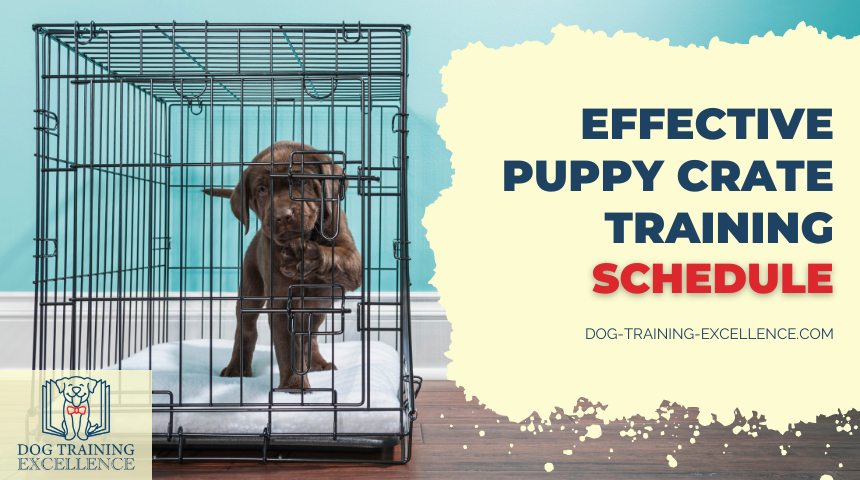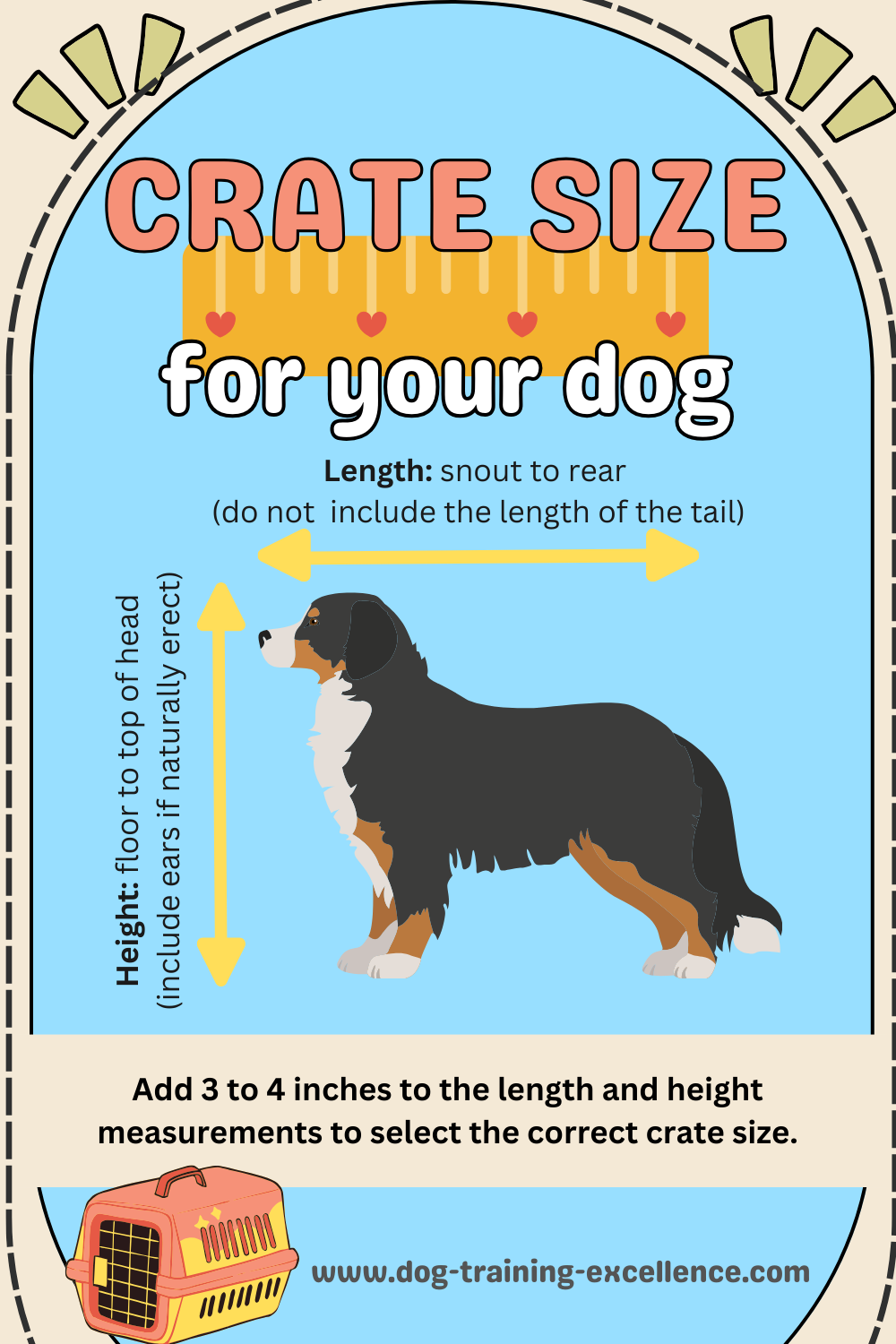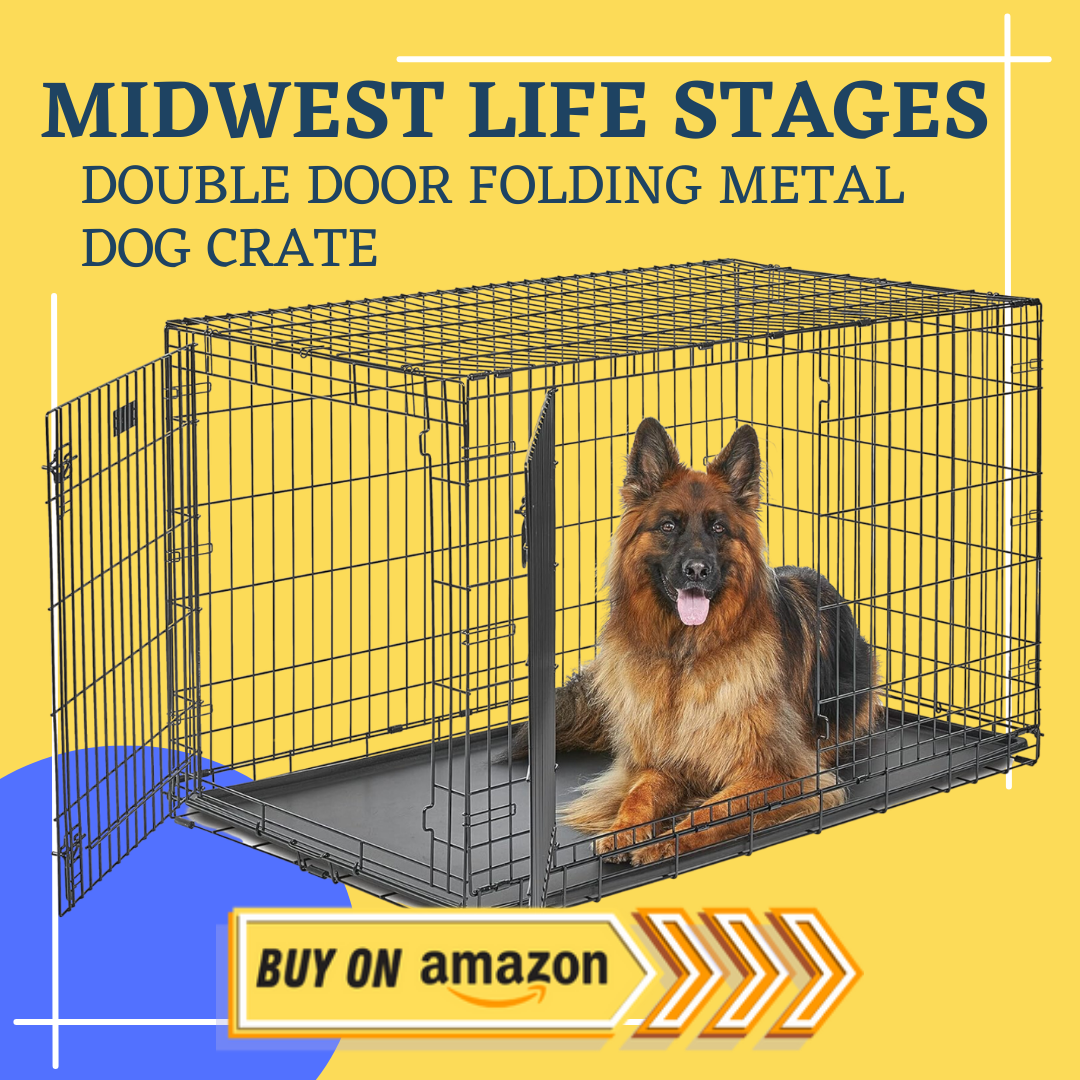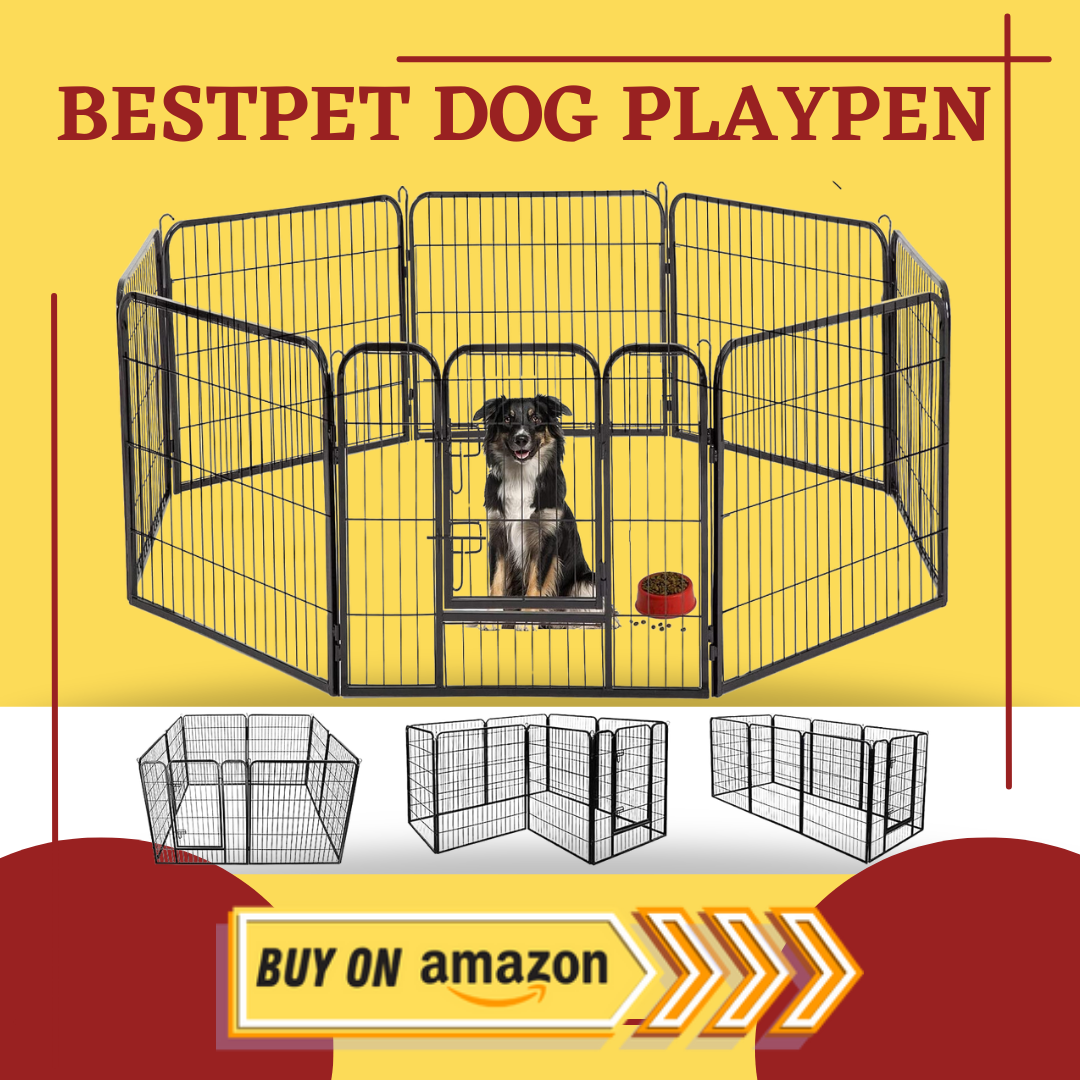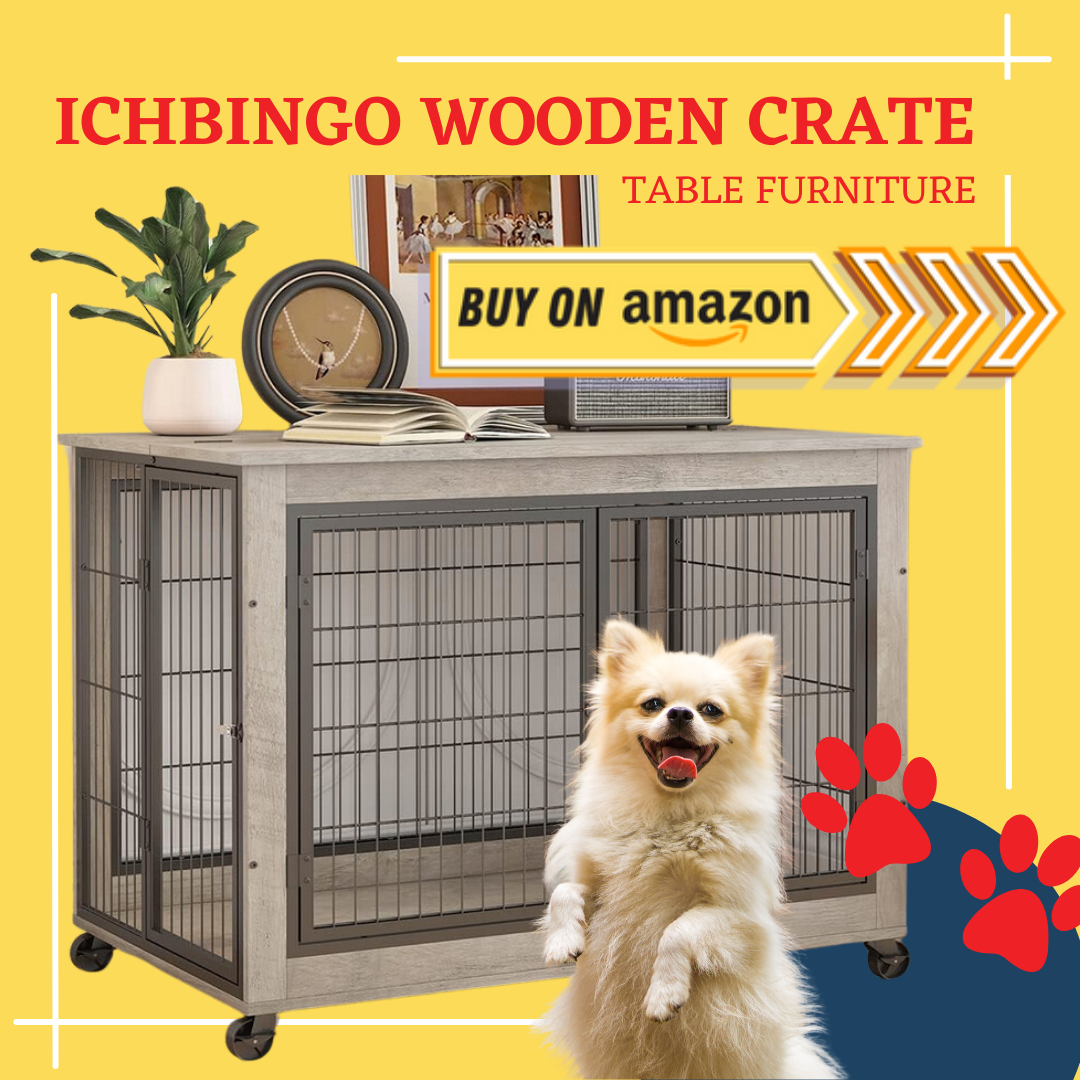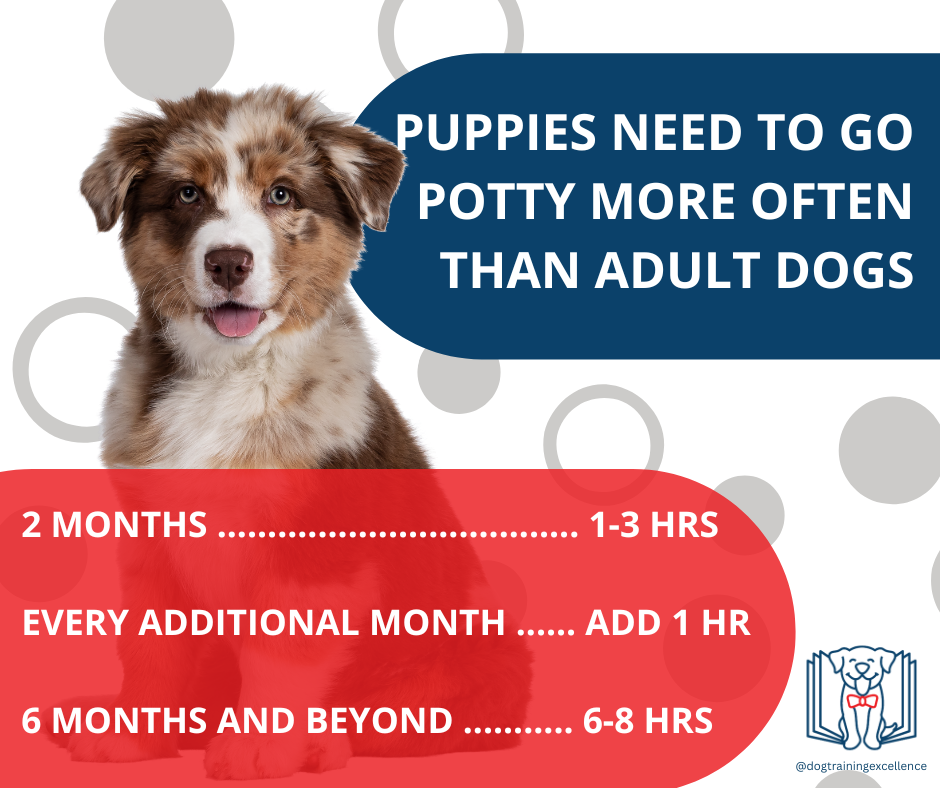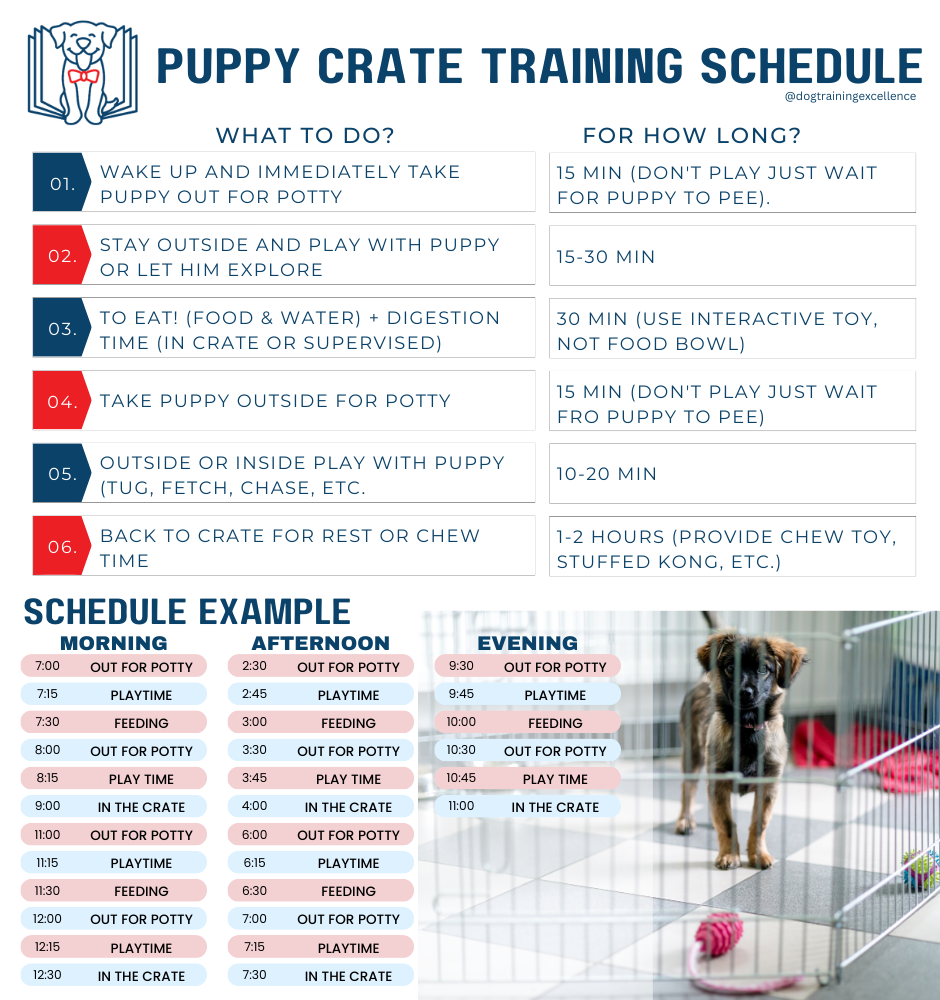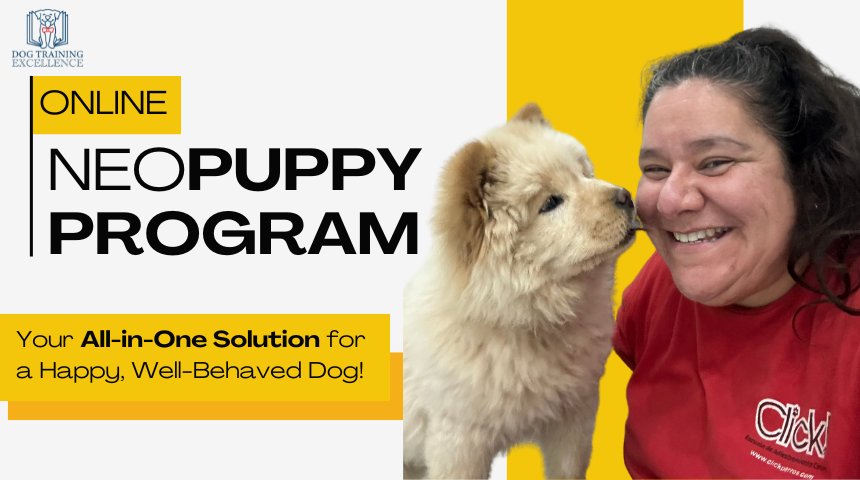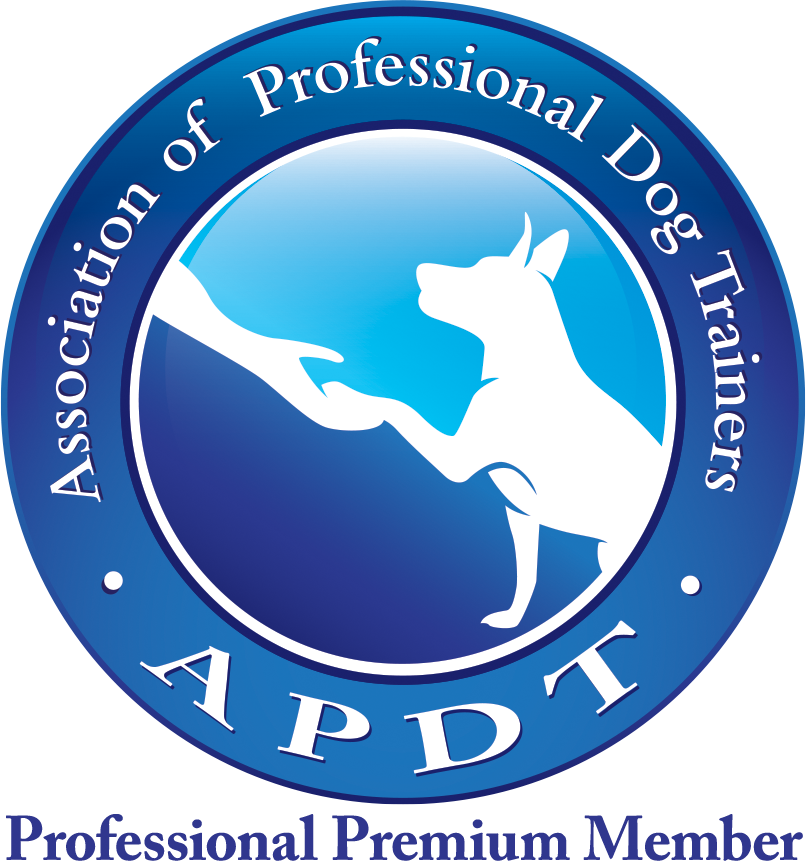I try to write my posts as unbiased as possible and recommend the products I consider to be useful and the best. I use affiliate links, this means that–at no extra cost to you–I can make a commission on a purchase you make after clicking on them. As an Amazon Associate I earn from qualifying purchases.
Effective Puppy Crate Training Schedule
(With Free PDF)
Are you ready to create a puppy crate training schedule? If so, you're in for a treat! Today, we're going to talk about one of the most important aspects of crate training: creating the perfect schedule. As a seasoned professional dog trainer who's seen it all, I can tell you that a well-structured routine can make all the difference in helping your furry friend adjust to their crate with ease. So, paws up and get started!
Article Highlights:
- The Importance of Crate Training a Puppy
- The Secret to Finding the Perfect Crate
- Training Your Puppy to Be Happy in the Crate (Step by Step Guide)
- Designing Your Puppy's Crate Training Schedule (Free download!)
- Addressing Common Challenges with Practical Tips
- Frequently Asked Questions About Puppy Crate Training
- Enjoy Your New Puppy!
The importance of crate training a puppy
Before we dive into the nitty-gritty of creating a puppy crate training schedule, let's talk about why it's such a big deal. Proper crate training isn't just about preventing accidents on your living room rug or destructive chewing; it's a critical part of your puppy's early education. Here's why it matters:
More than a Confinement Strategy
Dog crate training is a popular management technique to deal with house training, home destruction and puppy hyper-activity. It's also useful to transport your pet to other places in a safe way.
But crate training isn't just about containment; it's about creating a safe and secure space for your puppy to call their own. Perhaps the most important benefit of crate training is the sense of security and stability it offers puppies. In the wild, dogs seek out small, enclosed spaces to rest and recharge. By providing a crate as their own personal sanctuary, you're giving them a sense of ownership and control over their environment.
Think of it like this: would you feel more comfortable sleeping in a wide-open field or nestled snugly in your own bed? For puppies, the crate serves as their bed, their sanctuary, their safe haven amidst the chaos of the human world.
5 ways to take advantage of crate training
But the benefits extend beyond mere comfort. Statistics show that house soiling and destructive chewing are leading causes of pet abandonment. By crate training your puppy, you significantly reduce the risk of these behaviors, ultimately strengthening the bond between you and your furry friend and avoiding having to make a very hard and painful decision.
- Crate training also plays a vital role in housebreaking, as it teaches puppies to hold their bladder and bowels until they're taken outside. This prevents accidents in the house and fosters good bathroom habits that will last a lifetime.
- It also prevents destructive behaviors that can result in costly damage to your home and belongings. When puppies spends time with their own toys in the crate, they learn to play with -those- toys, instead of chewing on other objects.
- It encourages periods of calm behavior. When you teach your puppy to stay in their crate and rest, they begin to
understand that there are times to rest and times to play. This helps
to establish a routine that aligns with your own human schedule.
- It serves as a transport and safety place when traveling. Once your puppy learns to love the crate, you can use it to make travel
easy and bring a safe space to unfamiliar environments such as the vet,
pet shows, or competitions.
- Crate training provides invaluable peace of mind for pet owners. Whether you're busy cleaning, running errands, or simply need a break, knowing that your puppy is safe and secure in their crate alleviates stress and worry.
In conclusion, crate training isn't just a training technique; it's a gift you give your puppy and yourself. By establishing a structured puppy crate training schedule, you're laying the foundation for a lifetime of good behavior, strong bonds, and happy memories. So embrace the crate, embrace the schedule, and watch as your puppy flourishes into the confident, well-adjusted companion you've always dreamed of.
Expert Tip:
Puppies and dogs should never be left alone inside a crate for more than 2-4 hours. If you work outside your home for 8 hours a day, you can't leave your puppy inside the crate for that amount of time. Consider letting your puppy stay in one room of the house big enough to have the crate in a corner, a potty pad in another corner and room to move around and play. Your puppy must always have water available.
You may need the help of a professional dog trainer to help you out too!
The Secret to Finding the Perfect Crate
When it comes to crate training your puppy, finding the right crate is crucial. With hundreds of them available, it can be a daunting task. But fear not, dear readers, for I'm here to unveil the secret to discovering the perfect crate to plan a puppy crate training schedule. Let's dive in!
What size should a dog crate be?
How big of crate does my dog need? The golden rule here is to ensure that your puppy has enough room to stand up, turn around, and stretch out comfortably. A crate that's too small can feel cramped and restrictive, while one that's too large may defeat the purpose of crate training by allowing for accidents in one corner and sleeping in another.
To determine the ideal size for your puppy's crate, consider their current size and breed, as well as their projected adult size. As a general rule of thumb, opt for a crate that's large enough to accommodate your puppy's adult size while using dividers or inserts to adjust the space as they grow. Some crates come with inserts to adjust the size of the crate, otherwise you can use a plastic container or divider make the puppy crate smaller.
To be accurate, measure your dog's height (from the floor to the top of the head or the tip of the ears if they are naturally erect) and length (from the nose to the rear, do not include the length of the tail). Now add 3-4 inches to each measurement and that's the size you will need for your dog!
What is the best dog crate material?
The answer to that questions depends on what do you want your crate for, and your dog’s size and destructive power.
- Fabric dog crates are lightweight and very easy to fold, making them an excellent choice for travel. Your dog must be fully crate trained and still be supervised at all times because a dog could break out of it very easily. If you are going camping, to a doggy event or on a trip, this is a great choice. However, I do not recommend crates made out of fabric for potty-training and daily unsupervised confinement.
One of the best travel crates in the market, the EliteField can be folded for transport and has 3 doors which can be useful for training dog sports.
I comes with a carrying bag and a fleece bed for your dog's comfort.
- Wire dog crates are popular for their durability, ventilation, and visibility.
They're great for puppies who enjoy a more open environment and don't
mind being able to see their surroundings. They
can be very secure, most can be folded for storage or travel and they
tend to be cheaper than plastic ones. You can also find non-collapsible
wire crates that are sturdier and prevent clever dogs from escaping. Plus, they're easy to clean
and maintain, making them a favorite among pet parents.
The Midwest Homes Crate is one of the most popular to potty train your dog. This crate can be folded for transportation and has 2 doors to allow you to place it at different angles. It includes a divider to make the crate smaller then bigger as your puppy grows.
A play pen is also a popular option to keep your puppy confined to a smaller area. The BestPet Dog Playpen is a good option and can be assembled in different ways.
Keep in mind that if the area is too big, he may go potty inside!
- Plastic dog crates offer a more enclosed and den-like feel, which can be
comforting for some puppies. Additionally, plastic crates
provide added privacy and security, making them a great choice for
anxious or nervous pups. These crates are very strong and tough, so I recommend them if your puppy chews through everything. Plastic
dog crates are also good for your pet when traveling on an airplane.
Petmate is a good brand, their dog crates are very sturdy and durable. However, these crates are not easy to transport, they are big and bulky. They are built in two parts (top and bottom) and take up quite a bit of space to store them.
They are very easy to clean and will stand strong agains a heavy chewer.
- Decorative dog crates are for pet parents who want to blend functionality with style. These crates are designed to complement your home decor while providing a comfortable and secure space for your puppy. From elegant wooden crates to chic rattan designs, there's a decorative crate to suit every taste and style. When selecting a decorative dog crate, consider both form and function. Look for crates that are well-built and sturdy, with ample ventilation and easy-to-clean materials. Additionally, choose a design that complements your home's aesthetic and fits seamlessly into your living space.
Decorative crates are more expensive but look great in your home! It's important to teach your puppy to love this place so he will also use it to rest in the future. The IchbinGo Dog Crate Furniture look beautiful and look great!
Some IchbingGo crates come with wheels to make them easy to move around the house. These a great feature. However, once the crate is in place make sure to lock the wheels to prevent your puppy to get scared to go inside if it moves.
In conclusion, before planning a puppy crate training schedule you need a great crate! The secret to finding the perfect crate lies in selecting the right size, material, and style for your puppy's unique needs. By taking the time to assess their requirements and preferences, you'll be well on your way to finding a crate that provides comfort, security, and style for both you and your furry friend. So why wait? Click any of the links above to discover the perfect crate for your puppy!
Training your puppy to be happy in the crate
Before you can start using a puppy crate training schedule, it is imperative that you teach your dog to love its crate, this will prevent constant whining, barking and crying.
Choose the right place for the crate. If your puppy is very young, I recommend the crate to be in a place where the puppy can still see you move around the house. You can change the placement of the crate later on, so don't worry about it too much.
Dog crate training step 1: Easy and fun to start
Open the door of the crate and toss a treat inside. Keep the door open and let your pooch explore it. Do this several times until your pet goes in an out easily and without hesitation after a treat. Before you move on to the next step, make sure your puppy has no hesitation going in the crate to get the treat.
Time to start training the signals “Go in” and “Out”.
Dog crate training step 2: Teach the signals
Say “Go in!” (you can even point with your hand) and toss a treat inside the crate. As soon as your dog goes inside the crate, praise him with your marker word and toss another treat for him. Immediately afterwards, say “Out” and toss a treat outside the crate, when your pooch goes outside praise and reward again. Repeat several times until your canine friends “gets it”. You will know this because he will start going in and out more easily and without any hesitation.
Expert tips
- Use a super yummy treat! You are trying to create the best experience possible, we want to make sure the dog loves the crate as much as those treats! (so...If he doesn't love the treats, he won't love the crate!).
- Practice in short and fun sessions, maybe 6-12 repetitions and stop to play or do something else. Don't let your puppy get bored and wonder away. Even if you have a super eager puppy, it's better to start with short sessions.
- During this step we are NOT (I repeat, NOT) working on duration, so your goal is NOT (I repeat, NOT) to keep the puppy longer and longer inside the crate. The goal of step one is to get your puppy to learn the verbal signals. It's a game of in and out, in and out, in and out....
- For your puppy to learn the signals "Go in" and "Out" the order in which you do the exercise is key.
- FIRST say "Go in" IMMEDIATELY AFTERWARDS toss the treat inside the crate.
- FIRST say "Out" IMMEDIATELY AFTERWARDS toss the treat outside the crate.
Dog crate training step 3: Test the signals
When you are sure your dog loves the go in and go out game, start delaying tossing a treat inside the crate after the signal “Go in”. The idea is to give the dog a chance to respond to the signal without following a treat. Say “Go in!” and wait for your dog to go inside, as soon as he does praise and reward! Now you are rewarding your dog for going in (after you ask) instead of luring him with a treat... the first step towards success!
The first few times I would wait up to 10 seconds, if your dog doesn’t go in, then practice a few more times letting him follow the treat inside the crate. Do the same for “Out”.
You may have noticed that we haven’t closed the gate up until this point. It is very important to help your hound love his den before closing the door. The training technique above helps your dog associate the crate with good things happening, which makes the crate a good thing in itself.
Dog crate training step 4: Start closing the door
Say “Go in” and as soon as your dog goes in, praise and reward with a treat. Immediately afterwards close the door for 1 second, open it and say “Out!”. Praise your dog for going out (no more treats for this skill, going out is the reward). Repeat several times, until your dog is comfortable with you closing the door.
Expert tip
We are still NOT (I repeat, NOT) teaching your puppy to stay longer and longer inside the crate. So, the whole repetition should last less than 5 seconds in total:
- You say, "Go in"
- Wait for the puppy to go in
- Puppy goes in
- You toss a treat inside the crate and close the door
- Immediately open the door
- Say "Out"
- Puppy goes out
- Start over
Dog crate training step 5: Slowly extend the time the door is closed
Ok, now we will work on duration!
Repeat step 3 but slowly increasing the time the door is closed. The first few minutes will be the most challenging, you must go as slowly as necessary to prevent whining. The slower your work, the faster your puppy learns (I promise!).
This is how each repetition should look like:
- You say, "Go in"
- Wait for the puppy to go in
- Puppy goes in
- You toss a treat inside the crate and close the door
- Wait for x number of seconds
- Immediately open the door
- Say "Out"
- Puppy goes out
- Start over
It is important to make the duration variable. You don't want to increase the duration in a linear way, it is better for your puppy if time inside the crate increases in a random manner. Here is an example for 3 sessions of 12 repetitions each.
- Session 1: 1 seconds, 3 seconds, 1 second, 2 secs, 5 seconds, 3 seconds, 6 seconds, 4 seconds, 7 seconds, 3 seconds, 8 seconds, 2 seconds.
- BREAK (Take 1-3 min to play, pet your dog, or let him rest)
- Session 2: 5 seconds, 8 seconds, 3 seconds, 7 seconds, 10 seconds, 12 seconds, 6 seconds, 15 seconds, 12 seconds, 17 seconds, 10 seconds, 20 seconds.
- BREAK (Take 1-3 min to play, pet your dog, or let him rest)
- Session 3: 10 seconds, 15 seconds, 8 seconds, 18 seconds, 12 seconds, 20 seconds, 11 seconds, 20 seconds, 25 seconds, 8 seconds, 27 seconds, 30 seconds.
NOTE: this is just an example, if your puppy is struggling then repeat shorter sessions (less repetitions in each session) more often.
Looks like a lot of work? Trust me...it's worth the effort, in one week you will have a puppy that happily goes into the crate and and stays up to 30 min to 1 hour! The first few minutes are the most challenging, once you are up to 5 minutes, you will be able to make minute jumps, instead of second jumps. Do not try to skip steps to do a puppy crate training schedule!
Expert tips
Once you have reached 10-15 minutes, you can start giving your puppy a stuffed Kong or chew toy so he can keep enjoying the time inside the crate. As soon as you open the door and ask him to go out, take the Kong and toys away. It is very important for your dog to understand that those special toys are only available when he is confined inside the crate.
During this step we are NOT working (I repeat NOT working) on you being out of sight. So, I recommend you stay near the crate, maybe on a chair or table where your puppy can see you do something else. You can even do it while cooking, cleaning, folding laundry or working on your computer. As long as your puppy can see you fairly close by and not going out of sight.
Dog crate training step 6: Staying in the crate with you out of sight
You may have noticed that we are teaching every aspect of going inside the crate separately (door closed, duration, you out of sight, etc.). That's the best way to teach a dog anything. If you try to lump together closing the door, duration and you being away, your puppy will most likely fail and start whining.
I am a Certified Professional Dog Trainer (CPDT-KA) and I have worked with dogs for almost 20 years now, trust me: The slower you go, the faster your puppy learns!
To complete the training before we create a puppy crate training schedule, we need to teach the puppy to stay inside the crate and be OK even if you go out of sight. BONUS: This may prevent separation anxiety later on!
Start leaving the room in very short periods and extending them progressively. There is no need to use extra food rewards during this step. The idea is that while your puppy is on the crate for 30 minutes, you will leave the room and come back many times until your puppy gets used to you doing this. I will give you here examples of 3 different sessions (done during a 30 min practice).
- Session 1: Leave the room for 1 second (in and out of the room, NO DELAYS and DO NOT CLOSE a door behind you) at random intervals during the 30 min practice for a total of 30 times. Example: At min 2, min 5, min 5:30, min 6, min 6:15, min 10, min, min 12, min 12:10, min 12:50, etc.
You must repeat session 1 (which is just you leaving for 1 seconds many times) until you notice your puppy doesn't care anymore. The first few times you get up and leave the room your puppy may become alert or even bark or whine, you go back in, sit down and continue doing what you were doing (if you are doing nothing, pretend to do something like reading a book or working on your computer). After many repetitions you may notice that your puppy may look at you, but he is no longer alert or slightly anxious... you MUST SEE this change in behavior before moving on to the next step.
Some puppies, may be OK doing Session 1 only one time. Other puppies may need to repeat it session 1 (1 second absences) more times throughout a few days to feel comfortable. Just read your puppy and act accordingly.
- Session 2: Leave the room for 1-5 seconds at random intervals during the 30 min practice. Example: At min 2 leave for 2 seconds, at min 3 leave for 4 seconds, at min 3:30 leave for 1 second, etc.
Again, you cannot move to session 3 unless you notice your puppy is no longer alert waiting for you to come back in. The idea is to create this random pattern of you coming in and out so many times that the puppy will get bored of watching you doing this!
- Next sessions: Increase the time you leave progressively. For example: Session 3 leave for 1-10 seconds, session 4 leave for 10-30 seconds, etc. Work this way until you are able to leave for 30 min to 1 hour or even more.
Again, after you have achieved 5 minutes out of sight, you will be able to do minute jumps instead of seconds and your puppy will learn faster and faster.
Case Study: Will
Slow wins the race
and some times we need to start over
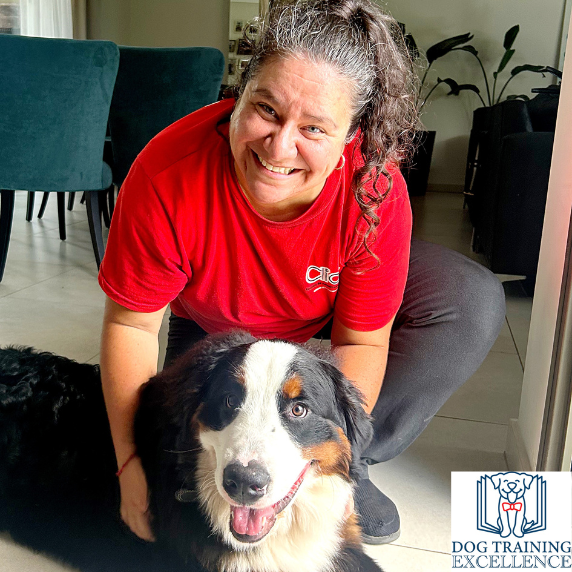
Will is a Bernese Mountain puppy slowly entering his adolescence. His humans wanted to train him with a puppy crate training schedule to stay inside the crate when they had zoom meetings and couldn't supervise him (1-2 hours), so we started training Will to LOVE the crate! I gave Will's humans the same instructions I just gave you, with the goal of teaching Will to go in and out.
When I saw them again a week later for the next class, Will's parents were very frustrated. They told me Will started scratching the door of the crate and they couldn't continue with his training. What happened?
This is not uncommon, many dog parents want to see results right away and they rush the training steps. Imagine teaching a child the alphabet (A-Z) and right after they learn it, you give them a thick book to read. Would that make sense? That is exactly what people do with their dogs.
Will's humans practiced Steps 1-4 in 1 day and then went straight to adding time (oh no!).
The first 4 steps outlined above are designed to help a dog TRUST the training process and LOVE the crate. If we rush the training we don't give the dog time to learn this.
So, the big question is. How do you know WHEN to move on to the next step?
You have to learn to read your dog's body language and you should always add extra easy repetitions or sessions for good measure. Here is what we did.
- Set up the crate and training treats.
- Toss a treat inside the crate and wait for Will to get it. The first 3 repetitions Will does NOT go into the crate with his whole body, and rushes out after getting the treat. This is OK, keep practicing. We did 15 more repetitions.
- BREAK
- Repeat: toss a treat inside the crate, this time we tossed the treat further into the crate only during some repetitions, others, the treat fell right next to the door. Will started getting inside the crate more readily, but was hesitating when the treat was further back. This is OK, we let Will take his time. We did 12 repetitions.
- BREAK
- Repeat: Toss a treat inside the crate, again sometimes further into it and sometimes closer to the door. After 8 repetitions, Will started going to the back of the crate without hesitation. YEAH!
- BREAK
- Repeat: We repeated exactly the same as before just to make sure Will had no problem going in and out to the back of the crate.
- BREAK for the day.
Watching your dog's body language is KEY to succeed in any dog training. In Will's case, the hesitation (time it took to retrieve a treat from the back of the crate) decrease and still, we repeated a whole other session like this - to build confidence.
Will's parents were told to spend 2 days on each Step (1, 2, 3 and 4 = 8 days). Only the following week we attempted to add more time.
Designing Your Puppy's Crate Training Schedule
Now you have a dog that can go in and out of the crate on command and best of all…loves to be inside it! If you have a young puppy, these step shouldn’t take you more than a few days or at most a few weeks. For older or shy dogs, it might take a little longer.
Now it’s time to use the crate to prevent potty training accidents and teach your dog to chew only on his toys with a puppy crate training schedule.
Create a puppy crate training schedule!
Puppies do very well when you set up a routine because they learn to anticipate what is coming, which helps them reduce their anxiety. It’s the same with us, humans. We feel better when we know what is coming next. A puppy crate training schedule is a great thing because it gives you a specific pattern of actions to follow every day. Done correctly you can have a potty trained dog in just about a week (but it can take longer too!).
The following chart will help you remember how long puppies can hold their bladders depending on their age. You can't expect a three months old puppy to stay inside his crate for 4 hours without any accidents! Also, keep in mind that pups will potty after eating, after a play session and after a nap. Keep this is mind when working on your puppy crate training schedule.
Expert Tip:
Your puppy is unique, the following is just a way to understand that puppies need to potty more often. It is possible that your puppy potties more or less often and that is OK, just follow your own puppy's schedule by paying attention to how often he pees.
You will notice that a puppy crate training schedule has certain key parameters. Play time for 15-20 minutes, feeding time for 30 minutes and crate time for 1-2 hours. Follow the schedule as is, but use your human instincts too. If you think your puppy needs to play longer, do it. If you think your pooch wants to go potty, take him outside immediately. Remember, you puppy is unique.
Free puppy crate training schedule download!
Sign up to "The Yes Dog" our Monthly e-newsletter and receive a FREE printable puppy crate training schedule
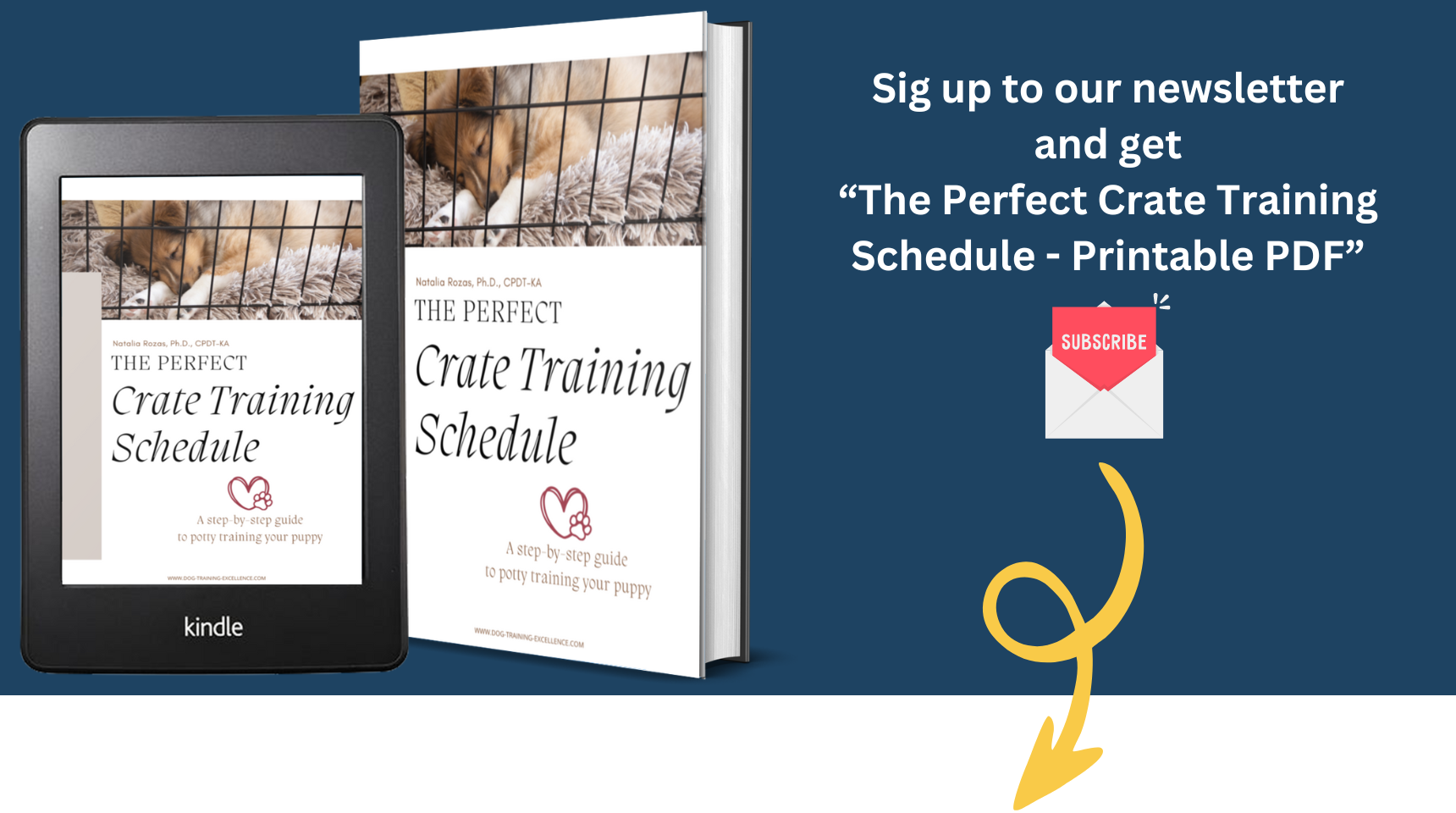
Sign up to The Yes Dog!

Our newsletter name ("The YES dog") was created to promote positive dog training methods (say -yes- instead of punishment) and the acronym also tells you what you will get into your inbox:
Yeehaw with your dog (find joy with fun activities)
Explore dog science (learn about your best friend)
Sayings that inspire (a quote to help you bond with your dog)
Remember to be patient. If your dog is not successful, then try to make things easier for him. If you follow the steps outlined above and the puppy crate training schedule, your dog will be just fine and potty trained in a few weeks (but it's OK if your puppy takes longer!).
As your pup grows, you can start adjusting the time he spends inside the crate and also the amount of times you repeat the crate training schedule. For example, a very young puppy may need to potty every 2-3 hours, but a 6 months old puppy will need to potty every 4-6 hours, so you can adjust the cycles of the schedule.
If you follow the training program for 2 to 4 months, you will have a 6-8 month old dog that no longer potties inside the house and only plays with his own chew toys. At this point, you can start letting you puppy roam around the house (supervised) more and more time, leave the gate of the crate always open in case your dog wants to rest inside the crate.
Eventually, your dog can live freely with you inside the house and only use the crate for rest time, a safe space (for when guests are home) and for travel or other needed occasions.
Never leave a puppy inside a crate longer than 3 hours.
Expert Tip:
Never leave a puppy inside a crate longer than 3 hours.
Addressing Common Challenges with Practical Tips
Planning a puppy crate training schedule can come with its fair share of challenges, but fear not! With the right approach and a bit of patience, you can overcome these obstacles and set your furry friend up for success. Let's explore some practical tips for addressing common crate training challenges:
Making the Crate Inviting and Comfortable
One of the first steps in creating a puppy crate training schedule is ensuring that the crate is a welcoming and cozy for your puppy. Start by placing soft bedding or blankets inside the crate to create a comfortable sleeping area. You can also add a few of your puppy's favorite toys or treats to entice them to enter the crate willingly.
Additionally, consider covering the crate with a lightweight blanket or towel to create a den-like atmosphere. This can help your puppy feel safe and secure while inside the crate, reducing feelings of anxiety or fear.
Here are my recommended dog crate gadgets to improve your puppy's experience:
Dog crate bumper
You can buy a dog crate bumper to make the walls of a wire or plastic crate more cozy. The Balapet bumper is a good option that will make soft walls around your puppy, specially if you have a metal wire crate. |
No drip water bottle
Your puppy needs water inside the crate if they are left there for 1-3 hours, most puppies will play with the water in a water bowl, make a mess and get all wet! I recommend a no-drip water bottle instead. |
Comfort toy
Very young puppies have a very hard time staying alone, even for short periods of time. Having a nice comfort toy to snuggle up with can ease your puppy's anxiety. The Moropaky Heartbeat is great to snuggle up with and comes with a soothing heartbeat sound. |
Licky mat for dog crates
One crate training hack to speed up training, is to use a licky mat for the crate. This will help your puppy stay inside the crate for longer periods of time in shorter training sessions. You can try the CIICII Dog Lick Mat which is easy to use and clean, your puppy will definitely love it! |
Using a Consistent Routine
Consistency is key when it comes to puppy crate training schedule. Establishing a regular routine for your puppy's crate time helps them understand what to expect and when to expect it. Aim to feed your puppy at the same times each day, followed by bathroom breaks and crate time. Consistency not only helps with housebreaking but also creates a sense of security and predictability for your puppy.
Practical Tips to Monitor a Puppy's Progress
As you embark on the puppy crate training schedule journey, it's important to monitor your puppy's progress closely. Keep an eye on their behavior while in the crate, paying attention to signs of anxiety, distress, or discomfort. If your puppy seems agitated or restless, try adjusting the crate setup or providing additional comfort items to help them feel more at ease.
Additionally, keep track of how long your puppy can comfortably stay in the crate without becoming restless or needing a bathroom break. Gradually increase crate time as your puppy grows accustomed to the routine, but be mindful not to push them too quickly.
Why It's Not Good to Ignore a Puppy Crying in Its Crate
If you follow the steps outlined above, your puppy should NEVER whine or cry. But you may read somewhere that letting your puppy cry it out will teach him to stay in the crate. I will be completely honest with you here: Ignoring a crying puppy can lead to feelings of abandonment and anxiety, ultimately hindering the crate training process. But some puppies will whine and cry for a maximum of 3 days (30 min the first night, 15 min the second night, 0-5 min the third night, nothing the fourth night) only if you COMPLETELY ignore your puppy crying.
It's the same heated discussion of weather one should let a baby cry it out or not. And it is up to you to decide what to do. All I can tell you is that if you do the "crying out" method wrong...it can go really wrong.
Frequently Asked Questions about Puppy Crate Training
Is it better to have a bigger or smaller dog crate?
Is it better to have a bigger or smaller dog crate?
You should always get the right size crate for your dog. The right size may depend on your goals. For example, if you are planning on traveling by airplane with your dog, make sure you get a crate that the airline will accept and follow their guidelines. If you want to get a crate for potty training, then follow the advice on this article about how to make a puppy crate training schedule. If you just want to get a crate to give your dog a comfortable space of its own, then size is not as important, but it shouldn't be so big that it stops feeling like a den.
Where should I put the dog crate?
Where should I put the dog crate?
There is no right answer for this because it will be different for each family. During the night you can place the crate in your room or a different room depending on your preference. There is truly no right answer, your dog will adjust to both situations.
During the day, if you work at home, I recommend you put the crate somewhere where your puppy can see you. This will make crate training easier.
Can I cover the dog crate with a blanket?
Can I cover the dog crate with a blanket?
Absolutely, if you feel your dog is too distracted or anxious about the lights and noises of the room, you can cover the crate with a blanket to provide a cozier environment.
Should my dog have water inside the dog crate?
Should my dog have water inside the dog crate?
Yes, specially if your dog stays alone inside the crate for 1-3 hours at a time.
Is it OK to leave dog toys inside the crate?
Is it OK to leave dog toys inside the crate?
Absolutely! The crate should be a fun and comfortable area for your dog. I do recommend you leave toys that promote relaxation like lick mats, chew toys, stuffed Kongs and comfort plush toys.
If your dog is a heavy chewer or eats parts of the toys, then make sure you only give him durable and unbreakable toys to prevent choking or getting sick from eating them.
Is it cruel to crate a dog?
Is it cruel to crate a dog?
It depends on how you teach your dog to be on the crate. If you put your puppy inside a crate without any training, then yes. It's cruel.
If instead you gradually teach your puppy to be relaxed on the crate (the way we outline on this article), then no. Your dog will love the crate! Using a puppy crate training schedule is great way to start your puppy on the right track!
What is the best age to crate train a puppy?
What is the best age to crate train a puppy?
As soon as you bring your puppy home, you can start potty and crate training. Puppies start learning as soon as they are born, so they are ready to start learning as soon as they arrive into their new home too. I highly recommend you start training your puppy (crate training or any other training) as soon as you adopt him/her!
Is crate training necessary for all dogs and puppies?
Is crate training necessary for all dogs and puppies?
No, crate training is a tool that can help you teach your puppy to potty in the right place and to chew only his toys. However, this can also be done without a crate.
I recommend crate training if you know you will be traveling a lot with your dog, a crate can help him feel safe in strange environments. I also recommend crate training if you have the money and room to get a crate for your dog, because your dog will love it if done correctly!
Enjoy your new puppy!
In conclusion, following a puppy crate training schedule can be a valuable tool for both puppies and their human families. Puppy crate training helps prevent common behavioral issues like house soiling and destructive chewing, and provides a safe and secure space for puppies to call their own. By addressing common challenges with practical tips and understanding the importance of consistency and comfort, you can successfully crate train your puppy and strengthen your bond in the process.
To summarize the key takeaways:
- Start by choosing the perfect crate for you and your dog.
- The first step is to teach your dog to LOVE its crate.
- Consistency and patience are your best allies. Stick to a routine and remain patient during the learning process.
- Use positive reinforcement to encourage desired behavior. Praise, treats, and affection go a long way in motivating your puppy.
- Adapt to your puppy's unique needs. Every dog is different, and you may need to adjust your training schedule to suit their personality and quirks.
Following a puppy crate training schedule may have its challenges, but the reward of a well-trained, well-adjusted, and happy puppy is more than worth it.
Remember that your puppy's success is also your success. have fun with each step of creating a puppy crate training schedule, and adore the moments as you watch your doggy companion grow into a well-behaved, delightful adult dog.
Ready to Train Your Puppy the Smart Way?
I’m Dr. Natalia Rozas, Certified Professional Dog Trainer and Neuroscientist.
The NeoPuppy Program combines 80+ short videos and 4 online private coaching sessions so you can train your puppy effectively and kindly, backed by science.
✅ Train at your own pace
✅ Personalized online guidance
✅ Results without stress or punishment
👉 Explore the NeoPuppy Program
This article was written by Natalia Rozas, Ph.D. and Certified Professional Dog Trainer (CPDT-KA #4071465) and updated on March 28th, 2024. Case studies and anecdotes are real but to protect the privacy of our clients the names and details are changed.
- Home
- Potty Training a New Puppy
- Crate Training
